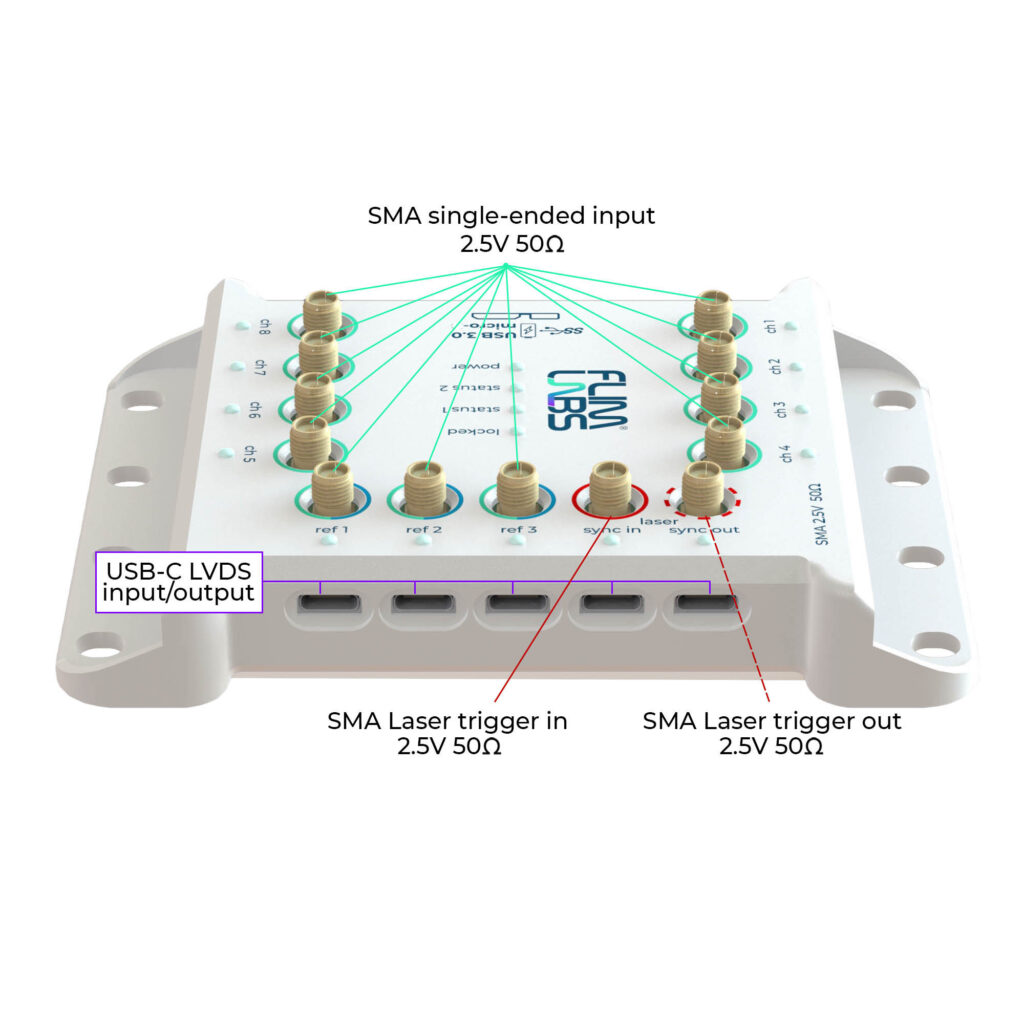Our compact, USB-powered data acquisition card is designed for fluorescence lifetime imaging and spectroscopy measurements. It is portable and its features embody FLIM LABS expertise and mission.
KEY SPECS
– Portable
– Plug-n-play
– Customizable (FPGA-based technology)
– Desktop-size-compact (101x139x28 mm)
– USB-powered
– Light weight (only 120 g)
– Point scanner imaging capabilities
– USB 3.0 SuperSpeed interface
– B2C or B2B selling options
Included in the package:
– FLIM Data Acquisition Card
– USB 3.0 SuperSpeed micro-B cable
– FLIM IMAGER acquisition and analysis software
– Python Apps for data acquisition and reconstruction
Software
The FLIM Data Acquisition Card works as a passive plug-n-play device in conjunction with our software tools which you can find on the dedicated softwares page, just follow the links below:
Python Apps
Imaging Software
Main Techniques
MAIN TECH-SPECS
- Down to 100 ps single-shot precision (σ/√2)
- 48 ps minimum time bin resolution
- 1.5 ns deadtime
- 80MHz Max laser sync rate
- < 0.5% rms differential non-linearity
- Transfer rate up to 100 M counts/s
- Peak count rate per input channel up to 640 Mcounts/s
- 11 SMA single-ended input for LVTTL 50 Ohm
- 1 SMA Laser trigger in (sync in) for LVTTL 50 Ohm signals
- 1 SMA Laser trigger out (sync out) LVTTL 50 Ohm for modulating external pulsed laser sources
- 13 USB-C LVDS input/output configurable




























